Addison: An Album Reaction
Running album themes: the fame monster, drugs, glamour, desire, greed, summer forever, teenage dreams, and a whole lotta irony(?)
I heard rumblings about Addison Rae in the immediate wake of her 2019-2021 TikTok dance trend fame. She appeared to me like every wannabe triple threat influencer from that era. After staring in a not-so-awesome, gender-bent reboot of She’s All That and releasing a critically panned single, “Obsessed,” the Internet collectively decided Rae was less of a pop star and more of a hack—a stunt, a product of our influencer-obsessed, style over substance culture.
I am here to admit I was one of those people—too old to care who she was and too deep in my “I know good music” phase to give her the time of day. That is, until
dropped this essay on Addison Rae’s new self-titled debut album.I had no plans to listen to Addison. My TikTok addiction days are long behind me, so there’s no real reason this album should be on my radar, other than perhaps our culture’s enduring obsession with hot pop stars in their early-to-mid-twenties. (Can these women ever do anything right?)
Yet, one quote from ryan’s essay made me reconsider:
“The album itself is 33-minutes of bright, glossy, 90s pop revivalism combined with the modern electronic elements that have made her contemporaries so interesting….Its sole producers, Luka Kloser and Elvira Anderfjärd, bring the Swedish pop stylings of Max Martin- owner of both producers’ publishing company- and combine that with the obvious influence of 90s electronica, most prominently Madonna’s magnum opus, Ray of Light.”
Okay, Addison. You’ve got my attention.
This past week, I gave this album the benefit of the listen. What I heard both surprised and disappointed me.
Let’s discuss the positives. First of all, the production on this album is insane. As a self-described stan of trip-hop and Gen X Soft Club, I was quite impressed that three twenty-somethings (all of whom are younger than me) managed to craft such a refined sonic landscape. The ethereal dance pop and synth influences reminded me of the best of Hilary Duff, Britney Spears, and yes, especially Madonna. The album practically calls these pop sensations out by name in “Money Is Everything” and “Aquamarine.”
It’s as if Addison is saying “Hey, world. I know you will inevitably shit on me and compare me to the pop stars who did it before (and better), so I’ll go ahead and beat you to the punch. I know I’ll never be Madonna or Gaga, but so what? Let me play around a little bit.”
This album very much depends on the listener having some baseline understanding of 90s pop culture, often referring directly or indirectly to various figures, sounds, and moments from across the decade. In fact, I may have to utilize this album in my larger essay on the cosmic connection between individuals and the music they heard in-utero and as young children.
My theory is as follows—just as the music we listen to as teenagers and young adults fundamentally imprints on our souls, I would argue the music we hear while in the womb and as toddlers and beyond ultimately affects our taste profile just as much. I cannot tell you all how much I love great music from my birth year and releases that arrived on the scene well through 2009. In the case of Rae and her producers (all born between 1997 and 2000), this theory certainly proves true.
As I listened to this short and pithy little album, I kept asking myself if she, indeed, meant to be this referential to 80s and 90s icons of yesteryear. Is “In The Rain” a nod to A-ha’s 1990 album opener, “Cry In The Rain?” Is “Headphones On” a sneaky reference to Massive Attack’s “Daydreaming” or is that just my own wishful thinking?
Regardless, there is some serious 90s and early ‘aughts nostalgia happening here. Coupled with allusions to Addison’s roundabout rise to influencer fame and fall from grace in the era of social media, the entire thing feels like an in-joke with itself. Like
wrote, “Nowadays, everything is a reference to something. Even the references have references.”Rae’s relentless self-mythologizing is on full display. She satirizes her own well-documented desire for fame, sex, and money, all while maintaining her glamorous, burlesque-esque Y2K aesthetic (try saying that five times fast). Given just how manufactured her entire brand is, I have to wonder if this carefully crafted caricature is only skin deep. “Fame is a Gun” and “Money is Everything” are exemplary of this tightrope she walks. For better or worse, we’ve all got a front row seat to whatever it is she’s doing with her brand, music, and fame.
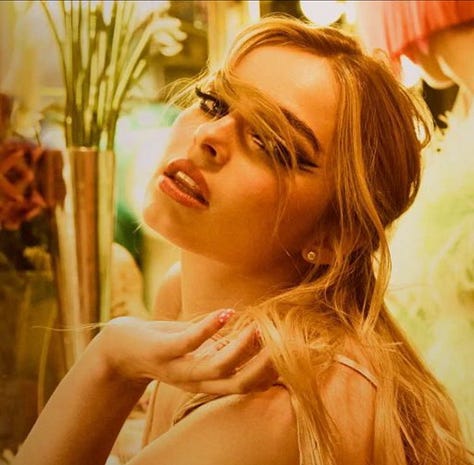

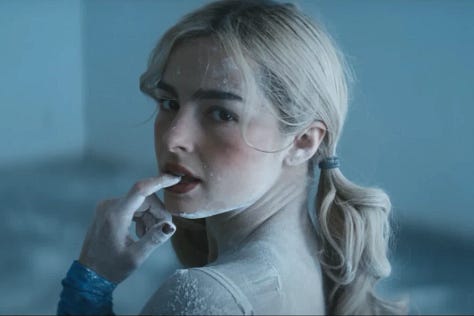
Time and time again, we’ve seen pop girlies break down under the pressure of the biz. Some come out of it better and wiser than they were before, while others fall into unnecessary conservatorships or relative obscurity. It’s practically common knowledge that the industry can and will chew you up and spit you out if you so much as hesitate.
What’s interesting about pop stars these days is how they attempt to avoid falling into these age-old pitfalls. Some align themselves with a particular sub-genre or community (Olivia Rodrigo & Chappell Roan). Others learn to reinvent themselves and their sound after a lengthy career (Charli XCX & Miley Cyrus). Some just intuitively know how to master being the center of attention and wield it accordingly (Sabrina Carpenter & Taylor Swift).
Addison tries to do all three, to mixed success. From Rolling Stone and Pitchfork articles announcing her pivot to pop, to a hit feature with 2024’s surprise critical darling, Charli XCX, Rae appears to want to occupy the space left by pop icons like Madonna, Lana Del Rey, and Britney Spears.
Everything about this album screams Y2K pop. Even the album art feels like a slight parody of OR maybe a genuine homage to its foremothers—
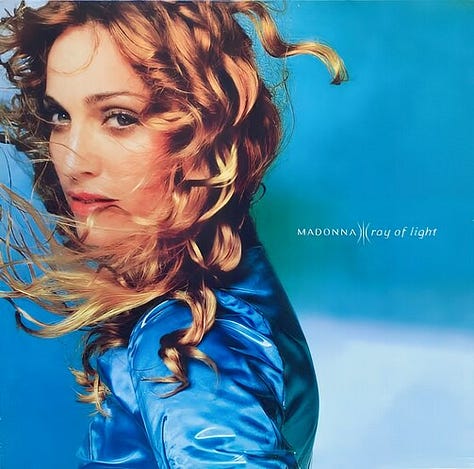

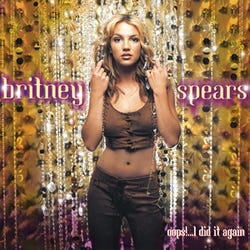
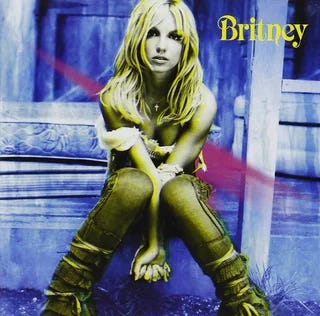
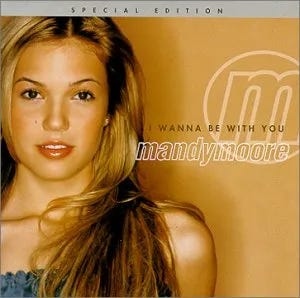

Has she been successful in achieving this goal? Only time will tell.
So, why am I disappointed? Well, there are a couple of reasons. Let’s get to the obvious.
Much of Rae’s previous TikTok dancer brand has been—let’s say—scrubbed clean. Her association with Trump supporting ex-boyfriend Bryce Hall, inflammatory comments about the Black Lives Matter movement, and infamous introduction to a one Donald J Drumpf at a UFC Fight in 2021 all left a bad taste in the collective mouths of the Internet. While it should be said Rae has publicly apologized for those comments and stated she does not support Trump, even the most talented, humanitarian-centered, and redemption-arc seeking celebrities cannot entirely outrun their pasts, as I’m sure Sean Penn and Brad Pitt can attest.
I’m not interested in getting into the weeds of pop girl ethics, politics, and internalized misogyny in this reaction. However, I am curious as to how Addison Rae and her team will attempt to mitigate the fallout of her past behavior as she navigates pop-stardom in the coming months. Will her fans conveniently “forget” the past or will her critics refuse to let anyone even begin to do that?
Finally, I just have to say that despite singing the praises of producers Luka Kloser and Elvira Anderfjärd, I was disappointed by the songwriting generally. Maybe lyrical complexity and masterful storytelling are too much to expect from a pop album of this breed. I don’t know.
Overall, I enjoyed it. During each and every front-to-back listen, I was certainly dancing. More than once, my mouth fell slightly agape at the masterful mixing. But beyond that trippy sheen of irony, I was left feeling rather hollow.
While this album may not be as soulless as AI drivel, there is still something missing. The vulnerability feels put on in a way I can’t explain, other than to echo ryan’s point that Addison Rae is the “…the finished product that she wants us to see, despite the music reflecting exactly how manufactured her personal image has become.” I found myself wanting more substance to match the intention behind the production. I thought, “Wow, Addison could really do something interesting if she dug deeper into this fame monster idea, as one of the first Gen Z products of the social media hell storm.”
Alas, that desire was not met with this album.
This argument could easily be made for other pop stars of this era and even those in previous ones. Manufacturing the sanitized image of the sexy-sweet “girl next door” used to be the name of the game. Now? When “authenticity” and subverting stereotypes are simultaneously all the rage, I guess the question is—who wears it best?





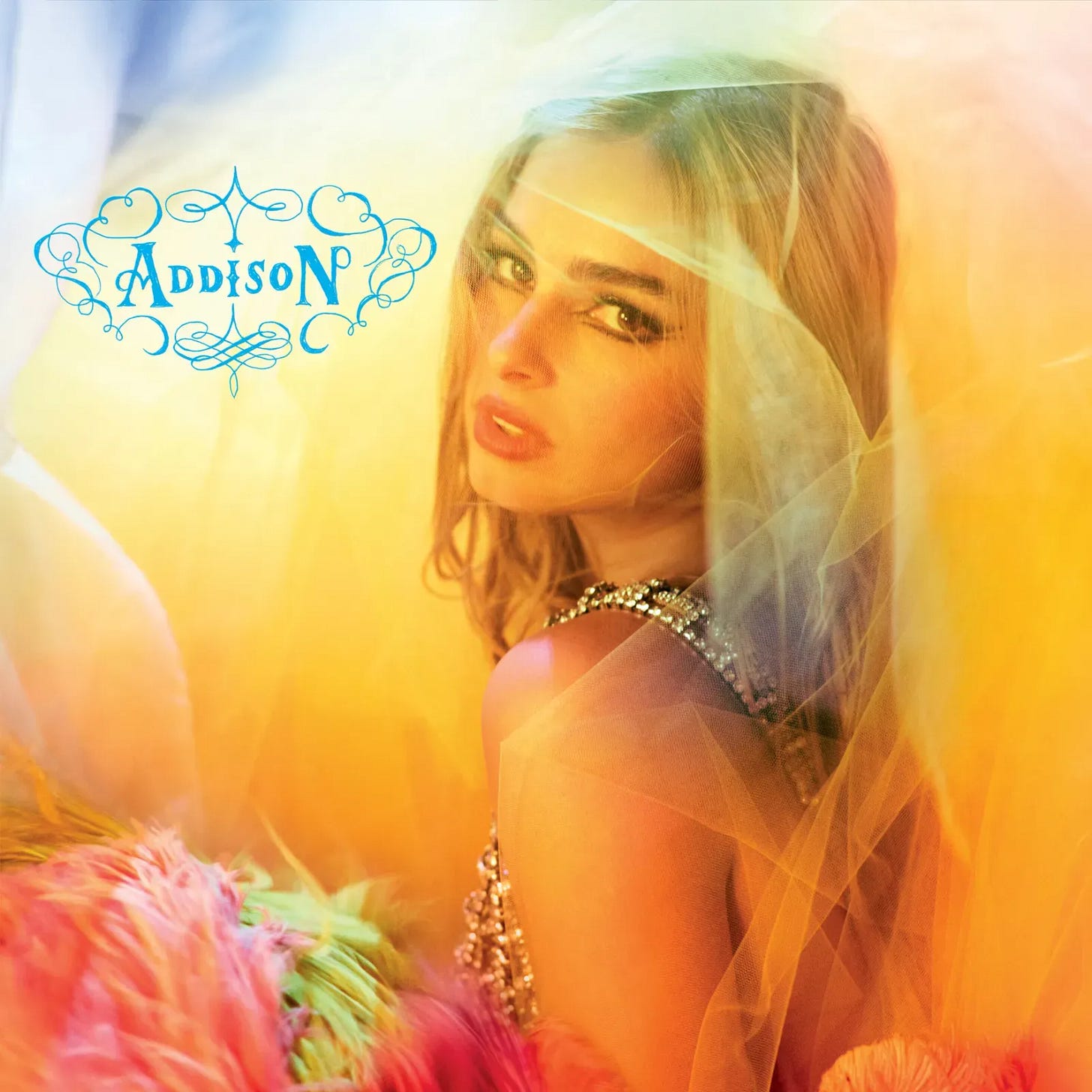
Thank you for this piece. Also, she should’ve called it “Rae of Light.”
You summed up how Mustard feels about this album. They really enjoyed the singles but like you feel like there is something missing.